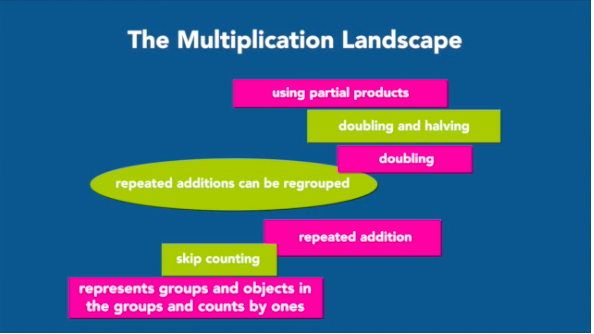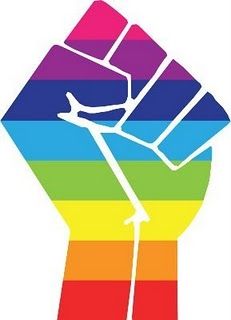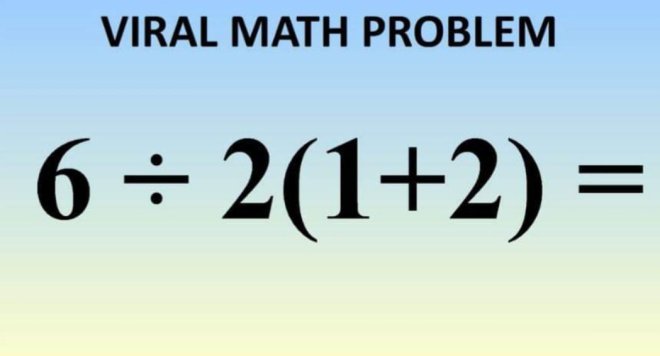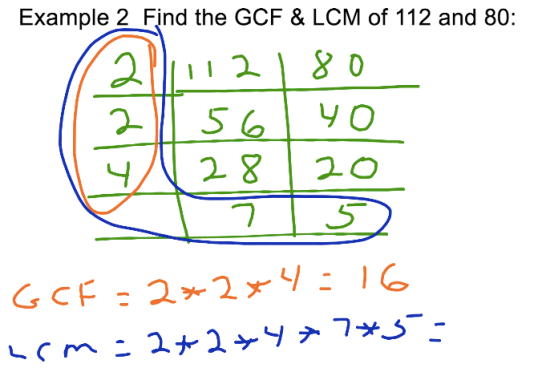So I am doing something new and unusual at my middle school this year. My school has school-wide intervention periods three times a week (we call it cerebral diversity or CD for short). CD is right after lunch, and the class is in smaller groups than a normal class for MOST of the groups (I have 12 students in mine). Students are sorted (somewhat) based on their state exam scores from the previous year – students who are at or above grade-level get to take “electives” like physics, school blog, or debate, while students who are struggling readers often are placed in intervention groups like “Just Words,” “Wilson Reading,” or “Small Group Reading Instruction.”
There are only two of us doing math intervention. The other person is trying something new this year – he’s pulling students out of other groups (primarily reading intervention) for 6-weeks at a time to use Math IXL for students to practice skills they need.
I did a completely useless intervention last year with some online program, and I don’t think any of the kids moved in their landscape of understanding or in their test scores. So I decided to try something new and different. This year, I confess, it’s a bit rocky and there’s no over-arching unit plans yet, because I’m making it up as I go along. I always take the “three-year view” with new curriculum though: the first year is a complete hit or miss mess because you don’t know what you’re doing yet, the second year is when you start getting the gist of the unit plans and order of the skills correctly, and the third year is when you really refine and hone the individual lesson plans. Even then, I think it’s really a good 5 years before you become proficient at teaching a course (this is why I think every teacher should teach the exact same course 5 years in a row, but I digress).
So I’m in my first year of this curriculum, and I’ve never had the opportunity to design a class like this before – so I’m super excited! I think it’s actually going to be profound, both for me (in the long run, having developed this class, I can then share it with other teachers in my school and/or other teachers/schools in my city or even around the country, I suppose – though it’s focused specifically at sixth graders who enter middle school without fluency and proficiency in math).
I started out with a few basic goals that I outlined in my “unit plan:”
|
Year-Long Essential Question
|
| How can I set goals and grow as a mathematician? |
|
Essential Question(s)
|
| How can I make sense of math problems like a mathematician?
How can I notice, describe and analyze patterns?
How can I reason abstractly and quantitatively?
How can I look for and make use of structure?
How can I look for and express regularity in repeated reasoning?
How can I participate in a community of mathematicians? |
|
Unit Description
|
Math Cerebral Diversity is where targeted mathematics instruction lives. Each CD should aim to:
- Engage students as mathematicians
- Help students grow as mathematicians
- Create a mathematical community
- Engage students in noticing and wondering mathematically
- Develop students’ avenues of thinking for solving problems by providing opportunities to engage with a variety of problems
- Develop a bank of “ask yourself” questions and actions to take when attending to quantities and relationships, organization or behavior of number and space, and repetition in processes or calculations
Expectations:
- Set a serious and warm tone that takes advantage of every minute this small, special group is together with you. These groupings are time and money intensive for our school AND worth it.
- Match students to interesting and engaging mathematical inquiry.
- Confer with your students about their problem solving process and strategies.
- Collect and assess problems.
- Maintain notebooks and/or folders for student writing about their problem solving.
|
I had some ideas right from the start of things I wanted to include and incorporate. The first thing was that I know I want to reinforce some of the routines I use with the whole class in math instruction, where I have the students notice and wonder, or I have the students notice, describe, and generalize patterns. I knew I wanted to use games, though at the beginning, I didn’t know which math games I would use (I’ve now built up some of a list). I also knew I want to emphasize vocabulary (unit-specific and math in general), as well as support the skills/topics we’re doing in “regular” math class AND support their numeracy (my bigger focus).
Some of the routines I either plan to use (or have already begun to use) with these students: notice/wonder, three reads, problem strings, I have/you need, the routines for reasoning, rumors, and one I call “fancy date.” I also plan to use lots of math games, and I have started to grow my list: “How Close to 100?” from Jo Boaler (a dice-rolling, area game), I have/you need?, and today, KenKen. (I also plan to use something called “find the Factor” /twisted tables eventually, but I haven’t gotten there yet). I realized that Kenken’s whole advantage is that it supports students in practicing number facts (but in a puzzle/fun way!), which is BASICALLY the goal/point of this course for me. So today, I taught them how to play Kenken in the most basic of basic ones – just addition and just a 3 by 3 and a 4 by 4. Tomorrow, I’m going to give the kids MORE practice with the KenKen puzzles, and I’m going to start administering the MRI interviews tomorrow while the kids work on the new puzzles (since they can work semi-independently).
What’s the MRI, I hear you ask? I discovered (through twitter) Marilyn Burn’s Mathematical Reasoning Inventory. I’ve had students complete the written portion (I was absent for a day, and I needed sub plans!), and now I need to perform the interviews with the kids to assess their reasoning and strategies for solving the arithmetic mentally. Since there’s 12 kids, it’ll take me some time to interview them all, but I figured now that they know a puzzle/game that they can be relatively independent on, I can start conferencing with them individually/in small groups to gather the data.
Ultimately, I would love to be able to assess where the struggling students are along Cathy Fosnot’s Landscape of Learning (for addition/subtraction, multiplication/division, fractions/decimals/percents, geometry, and algebra, and statistics >> but I don’t know that those all EXIST yet!), and then track how they grow over the course of the year. I’ve accepted that this part is probably a year 2 or 3 goal; I’m not sure yet how to gather this data, and I haven’t been doing it thus far!
Now, the other component that I haven’t talked enough about is Pam Harris’ work. Maybe you’ve heard me post about her lately? I have been taking one of her online courses (this one is about developing powerful multiplication), and it’s totally influencing the way I think I’m going to design this class moving forward this year AND how I’m going to restructure it for next year.
First, I introduced the game “I have/you need” last week and did a little bit of formative assessment – one of my students even asked for it today! (we ran out of time, so we’re going to try it again). I noticed from that game that two of my students didn’t know their “pairs to ten” yet – and many of them struggled with the pairs to 100 that weren’t “easy” (heck, I even struggle with that – that’s why I’m so much slower at mental math than my partner – she knows all of those pairs to 1000!). I had heard about this game before, but Pam’s website nicely laid out exactly how to begin and how to structure this game so it gets progressively harder and so that the kids start to build fluency with some of the facts.
A second thing I’ve been learning about (from her multiplication online course) is the different strategies for multiplication. She has 5/6 strategies that she says are VITAL for kids to know to be able to efficiently solve any problem that’s reasonable to solve without a calculator. The strategies (as I’ve understood them so far from her) are basically broken into two types: the ones that use the associative property (and maybe also the commutative property) and the ones that use the distributive property. She has named them doubling and halving (which can be extended to tripling/thirding, etc), and then flexible factors (where you can actually change the numbers you’re multiplying by rearranging the factors – for example, 6 x 35 can become 21 x 10 because 6 = 3 x 2 and 35 = 5 x 7, so the 5 and 2 can be regrouped and the 3 and 7 can be regrouped, and the 21 x 10 is MUCH easier to do mentally!) and then there are three types of chunking: “smart” partial products (to be distinguished from the four-part “place value” chunking prioritized by the algorithm), 5 is half of ten, and over/under (where you go to a friendly number that’s a little above or below your target and then adjust with addition or subtraction). Once students have the idea of a fraction as an operator, you can also use “quarters” as a strategy (this would mostly be an associative property one), where to multiply by 25, you could divide by 4 (or halve and halve again) and multiply by 100. She mentioned that some of the strategies come sooner on the Landscape for learning, and that would also support kids in mastering them first (it gives us, as teachers, an idea of the “usual progression” through the ideas, so we can support students in moving forward into more efficient/sophisticated strategies as they get stronger with the concepts and skills).

So then tonight, Pam also mentioned two big ideas (plus a bunch of littler, supporting ideas) in the class that I want to incorporate into my planning for CD:
First, the associative property-based strategies are easier for the kids to own because it “stays” in the multiplication whereas the chunking requires the students to know WHAT they’re adding or subtracting (which, when we keep it in a context like packets of gum, they can make sense of), but doubling is lower on the landscape of learning, a chunk of which is shown above, so they’re more likely to master that first. So this made me start thinking about the best order to introduce the strategies (via the various strings). I tried to do a x9 strategy with my kids the other day, and they seemed like they were starting to get it in the moment, but when I tried to revisit it the next day, they hadn’t retained it. And when I shared that with Pam (and Kim and Sue, and a few others at the end of tonight’s course), they reminded me that of course students hadn’t integrated it yet! It was brand new to them, and in the same way that I wouldn’t expect students to have mastered anything else after only doing it once, I need to do problem strings to develop a particular strategy more than once with my kids as well! Which brings me to a related idea, which is that we want to order the strings so that they’re developing the strategies in a manner that the kids can master them – but also so that the kids get enough experience with the “type of strategy” (and both the ratio table and array models) to be able to “own” the strategy and the ideas behind it. All of this reassured me that they will eventually master the x9, as long as I keep revisiting it. But it also made me realize I should use the landscape of learning to my advantage & start with an easier strategy to master, like double, double, double.
The other thing we discussed tonight were the “basic facts” and how to have strategies for each of them. She even sort of went in an order that seemed like it could be the order that I introduce it to the kids. Here’s what I heard. 
To support our students learning their multiplication facts, we need to focus in on one type of fact at a time, developing strategies for that number. She highlighted in color as she went through. My understanding of the order (for the 1 – 10 facts FIRST) is that kids should understand what it means to have “zero groups” of something >> and then what the zero facts are. They should next understand what it means to have “one group” of something >> and then they need to own the one facts. (I think that might be part of my conversation with the kids tomorrow, before we start playing Kenken, after we’ve played “I have, you need”). Then, they can move into doubling (x2), doubling and one more group (x3), and double-double (x4). From there, she suggested skipping to double-double-double for (x8). Then we went up to the x10, which is a place value shift. I was actually surprised in some ways that we had waited so long to get there, but I realized that noticing the place value shift is harder than just skip counting by tens or “adding a zero,” so I actually think it makes sense to develop some multiplication understanding before going to the times ten – because now, I could see an array that was n by 1 being repeated ten times to show the 10n. From there, she moved into the idea that 9 is 10 groups minus one group and then that x5 is half of times ten.
These strategies (combined with recognizing the symmetry in the table and that ultimately, you can “reverse the order of the factors” without impacting the product – the commutative property) reduce the number of facts you might need to “memorize” down to three facts: 6×7, 6×6, and 7×7. For some reason, she said 7 x 7, the kids often seem to know, but then we could think about how else to support kids in learning these facts. And I discovered my new favorite for 6 x7. If you know 3×7 = 21, then doubling the 3 to get 6 means we can double the 21 to get 42 (and 21 is pretty easy to double!). We can actually continue that pattern to do 12 x 7, where we can see that we’re doubling the 6 to get 12, so we can again double the product, which again is pretty easy – 42 doubled is 84. So now we’ve not only gotten the ten-times table, we’ve already started thinking about the 12 times table.
I’m guessing that the “elevens” are going to be using chunking of 10 groups plus one group (sort of like the “opposite” of the nines).
The 12s, I can see in a few ways:
- Reverse the facts >> instead of trying to remember 12 x 2, remember 2 x 12. This works for the easier ones on our list like 1, 2, 10, 5, and maybe 3, 4, 6, 8.
- Combine a few of the strategies: double to find x2, add one group to find x3, and then double (to find x6) and double again (to find x12). OR, if you already “know” some of those facts, then to go back to them and work on those individually.
- Chunk it into friendly numbers (like x10 + x2)
I actually just thought of another “game”/routine we need to do in my CD. We should do the choral count-arounds (or other ideas) or whatever they’re called. I just thought about how powerful it would be to get kids practice “doubling.” What if we started with a number, and I said “15. Now double it.” and then pointed to kids in our small circle, one after the other, and they had to double the previous number (in this case, 15, 30, 60, 120, 240, 480, 960, 1920, ahh!) instead of just doubling for powers of 2!
This is basically my attempts at consolidating some of my learning from tonight’s multiplication session, and to connect it with the work I’m trying to do in my CD. I’m also simultaneously “planning” for tomorrow and this year!
Oh, I just remembered another thing Pam mentioned – she talked about how to use flash cards (and now I’ve gotta check and see if I can find my deck – I hope I didn’t get rid of them!). Use them to categorize whether a student “just knows” a fact or if they don’t have it mastered yet (split the deck into “mastered” and “not mastered” in an interview style). They’re not racing, but any that they don’t know in about 3 seconds, put in the “not yet” pile. Then go back through and make a “clue card” based on strategies they know. For example, if they struggled with 8 x 7, maybe they want the reminder “7 = 5 + 2” or maybe they want the strategy “double-double-double” or maybe they want to try “double 7 x 4” because they know that. They’re building on relationships they know.
There was also the practice with connecting the multiplication problems on the paper (instead of using a “mad minute” with timer and doing as many as you can!), and I really liked that idea too!
I think my goal for my students is to start by simultaneously developing their pairs to ten and pairs to 100 (to support their additive reasoning and move them from counting), as well as to develop their multiplicative thinking, by mastering these strategies AND by mastering their facts. Because the COOLEST part (imo) is that a kid who has a strategy like “5 is half of ten” now owns not JUST the first 12 multiples of 5, but ANY multiple, because they have a generalizable strategy that ALWAYS works. So if I say “13 x 5” they can do 130 / 2 = 65. If I say, “24 x 5” they can say “240/2 = 120.” Now yes, this requires them to have mastered doubling and halving – which is why I think this brings me back to where I’m going to go next.
Tomorrow, we’re going to do more KenKen puzzles & I’m going to start doing assessments of the students. I’m going to do as many interviews as I possibly can & I’m going to try to record the ones that students know/don’t know and/or their strategies (I haven’t decided whether I’m going to start with the MRI from Marilyn or just the multiplication facts like Pam suggested. I’m going to try to record where kids are for the addition pairs while we play a game of “I have, you need” to warm-up immediately after lunch). On Thursday, I’ll probably do the same exact thing so we continue until we finish the MRI/interviewing of the kids.
Once I have that mastered (probably by next Tuesday), I’m going to continue developing their pairs to 100, but also shift to focusing on the multiplication facts. I’m going to start with ensuring that we’re solid with a rule for x1 and x0 (I THINK we are, but I am making NO assumptions anymore!). Then, we’re going to work on doubling until we have it mastered. We’re going to work on doubling both with strings that will show us double, double = x4 and double double double = x8, and also doubling to build on x3. I’m wondering how to support kids in “mastering doubling” though for kids who don’t have that skill yet (Pam? Any thoughts?). That may be more of an “elementary” skill, and maybe some of them have it more than I think, but I also know the “pairs to 10, 20, 100, 50, etc.” will make the doubling easier. I also wonder if I might need to go into compensation for addition strategies, or if I should just leave that be for now…
Once we’ve mastered doubling, we’ll work on the chunking for times three – double and add one group, double and add one group, etc. I also think at this point, it’ll be important to practice halving – though I’m not sure exactly what to do yet here (especially, since I had a few students who struggled to recognize even numbers that were three digits or four digits!). I also want to show some of the strings of doubling and halving here, so the kids recognize that sometimes, it might be easier to make a problem into a related but easier problem (i.e. 18 x 5 is kinda yucky, but 9 x 10 is easy – and you’ve essentially taken a factor of 2 from the 18 and given it to the 5 >> which KINDA reminds me of the compensation strategy from addition, where if you were adding 18 + 5, which is kinda yucky, you might take 2 from the 5 to make the 18 into 20, and then do 20 + 3 instead).
I think once they know how to double and halve, we’ll move into 5 is half of ten (because they already have some fluency with the times ten and we discussed it in terms of dollar bills the other day), and then ultimately, we’ll revisit the 9s and 11s, thinking about the chunking strategies at that stage.
I want to shift the kids away from skip counting, and I want them to start thinking multiplicatively. I think this order might get us a pretty good start. Let’s see how we go.
Finally, the last thing I was thinking about was something that came up after the main session, in my conversation with the smaller group of folks who stuck around (yes, I’m THAT kid! No, you’re not surprised!). I mentioned how we had done a string for the 9s strategy on Wednesday last week, and when we came back on Thursday, they didn’t remember the strategy at all. And one of the teachers reminded me that it takes repeated exposure to the strategies before the kids own them, and I was like “Oh, duh! I know that.” But it helped to remind me that the kids need more experience with thinking about the relationships and making sense of the math, and not just being expected to catch up “all at once.”
One last thing (and this was influenced by Grace & Amy, so let me give credit, where credit is due). Their routines (because of the annotation on the posters) wind up leaving a tangible “remnant” that can be used as an anchor chart. They also have the routines end with a meta-reflection, so the kids think about what they saw today as being connected to a future problem. The prompts often say things like,
“When doing <a>, I learned to pay attention to…”
“When doing <a>, I learned to ask myself…”
“The next time I do <a>, I will…”
That might also help them retain more, because it tunes them in and helps them think about the critical parts that relate to future problems.
Alright, that’s it for real now.









